A well-designed mobile app is key to making IoT medical devices easier to use, more secure, and widely adopted. Here’s why it matters:
- Simplifies User Experience: Apps break down complex processes, making devices accessible for both patients and providers.
- Boosts Security: Features like encryption and multi-factor authentication protect sensitive health data.
- Enables Real-Time Monitoring: Apps sync with devices to provide live health updates and improve care.
Key Features of Effective Medical Apps:
- User-Centered Design: Simple interfaces, personalized options, and error reduction.
- Accessibility: Inclusive design for people with disabilities, like large buttons and screen reader support.
- Data Security: End-to-end encryption, HIPAA compliance, and role-based access control.
- Engaging Features: Health tracking dashboards, smart alerts, and customizable views.
By focusing on usability, security, and compliance, mobile apps can improve health outcomes and drive adoption of IoT medical devices.
Make your Healthcare App HIPAA Compliant
Key Elements of Medical App Design
Creating a successful medical app means striking a balance between technical performance and user experience. This is especially important since nearly half (49%) of US adults now rely on healthcare apps .
Prioritizing User Needs in Design
Start by understanding the diverse needs of your users. The goal is to combine functionality with simplicity, reducing the risk of errors. Why does this matter? Errors in healthcare cost the US system a staggering $20 billion every year .
To make your app easy to use, focus on:
- Breaking down complex tasks into manageable steps
- Using plain, jargon-free language
- Providing instant feedback for user actions
- Adding options for personalization
Ensuring Accessibility for All Users
Accessibility isn’t just a nice-to-have; it’s a must. Around 1.3 billion people globally live with disabilities , and inclusive design ensures your app is usable by everyone. On top of that, accessibility lawsuits now make up about 20% of all ADA Title III filings , so compliance is both an ethical and legal necessity.
Key accessibility practices include:
- Maintaining a color contrast ratio of at least 4.5:1 for standard text
- Allowing text resizing up to 200% without losing functionality
- Offering captions and transcripts for multimedia content
- Designing large, easy-to-tap buttons and interactive elements
- Supporting assistive tools like screen readers
Designing Intuitive and Clear Interfaces
A well-designed interface should feel natural, align with healthcare workflows, and emphasize critical details.
| Interface Element | Design Tip | Benefit |
|---|---|---|
| Text Size | Use large, high-contrast fonts | Enhances readability for all users |
| Navigation | Simplify clicks and provide clear paths | Reduces frustration and confusion |
| Color Scheme | Stick to neutral tones with customization options | Appeals to a wider audience and improves accessibility |
| Notifications | Provide alternatives to in-app alerts | Boosts engagement across different age groups |
Let users customize their main screen, use clear visual indicators, and steer clear of overly complex elements like sliders or carousels. Testing your app with a diverse group of users ensures your design choices work for everyone. These principles lay the groundwork for seamless integration with devices, which we’ll explore next.
Connecting Devices and Apps Effectively
Reliable connectivity between devices and their companion apps is a key factor in IoT medical device success. With 81% of adults open to sharing wearable health data with healthcare providers , ensuring secure and consistent device-app communication is essential.
Managing Live Data Updates
Keeping devices and apps in sync with real-time data requires adherence to established standards. Formats like HL7/FHIR are widely used to ensure compatibility across healthcare systems . Here’s how to maintain smooth performance:
| Component | Implementation | Benefit |
|---|---|---|
| Backend Service | HIPAA-compliant cloud platforms (AWS, Azure, Google Cloud) | Secure computing and storage |
| Data Format | HL7/FHIR standards | Universal compatibility |
| Connection Protocol | MQTT with encryption | Efficient real-time updates |
| Monitoring | Real-time logging tools | Quick issue detection |
Once data synchronization is optimized, the next step is safeguarding information during transfer.
Protecting Data During Transfer
Inadequate security can lead to costly penalties, as seen when a Massachusetts hospital faced a $218,000 fine for poor file-sharing practices . To avoid such risks:
- Use AES-256 encryption to secure data at rest.
- Apply TLS/SSL protocols for data in transit.
- Implement mutual authentication between devices and servers.
- Deploy real-time monitoring to catch unusual activity.
Fixing Common Connection Problems
After securing data transfers, addressing connectivity issues systematically is crucial.
1. Device-Level Checks
Start with hardware: verify antenna connections, device settings, and configurations. If signal strength is an issue, relocating the device may help .
2. Network Verification
Use tools like Azure Event Grid to monitor connection events . This can identify disconnection patterns and trigger alerts. For cellular-connected devices, confirm the service provider’s status before investigating further.
3. Software Solutions
"When troubleshooting cellular connectivity issues, the most effective way to check for potential problems is to test the device directly. In many cases, running a series of simple tests can help you narrow down what sort of problem you’re facing." – Steve Hardy
Introduce automatic reconnection protocols and token renewal systems, such as renewing SAS tokens every 60 minutes for Azure IoT setups .
To minimize disruptions, conduct regular stress tests and compatibility checks. This proactive approach can help reduce the $300,000 per hospital bed cost linked to workflow inefficiencies .
sbb-itb-7af2948
App Features That Keep Users Active
Strong integration with devices is just the start – engaging app features are what keep users coming back.
Health Tracking Dashboards
A well-designed dashboard pulls together IoT device data in one place. In fact, 86% of users expect centralized graphs and statistics to summarize their data . This shows how important a well-thought-out dashboard is for keeping users engaged.
Here are some elements that make health tracking dashboards effective:
| Dashboard Component | How It Works | Why It Helps Users |
|---|---|---|
| Visual Hierarchy | Use larger text for key metrics | Makes data easier to scan |
| Data Organization | Standard grid layout with consistent spacing | Simplifies understanding |
| Color Coding | Consistent palette with clear meanings | Speeds up recognition of key metrics |
| Customization | Let users choose which metrics to display | Makes tracking more relevant |
Smart Alerts and Reminders
Health apps see a 71% push notification opt-in rate, compared to 51% for other app categories. But overdoing it can backfire – 39% of users turn off notifications when they feel overwhelmed .
To strike the right balance:
- Personalize alert timing based on when users are most active.
- Align notifications with each user’s health goals.
- Regularly review engagement data to fine-tune alert frequency.
"If your retention is poor, then nothing else matters." – Brian Balfour, Founder/CEO of Reforge
Easy-to-Read Health Data
Simplifying health data is key to keeping users engaged. Research shows 92% of users want navigation and settings in familiar spots , highlighting the importance of predictable layouts.
Here’s how to present health data effectively:
-
Visual Clarity
Keep displays clean and uncluttered. Use simple graphics and consistent text styling to enhance readability. -
Information Architecture
Organize data in a clear hierarchy so users can quickly find and understand the most important metrics . -
Customizable Views
Allow users to adjust dashboards and prioritize the data that matters most to them .
Data Security and Privacy Protection
Healthcare data breaches come with a hefty price tag, averaging $15 million per incident . To tackle these risks, medical app design must integrate a range of security and privacy measures.
Data Encryption Methods
Healthcare apps need strong encryption to protect both stored and transmitted data. A layered security approach is key:
| Data Type | Encryption Protocol | Key Benefits |
|---|---|---|
| External Messages | RSA | Enables secure key exchange and authentication |
Gregory Cerallo from Sidekick Interactive emphasizes the importance of end-to-end encryption throughout the data lifecycle to block unauthorized access.
Meeting US Healthcare Laws
Technical safeguards alone aren’t enough – compliance with US healthcare laws is another critical layer of protection. Alarmingly, 90% of healthcare institutions reported data breaches in the last two years . To comply with HIPAA, organizations should:
- Enforce individual authentication for all users
- Audit user activity regularly
- Roll out security patches consistently
- Document all instances of data access
"HIPAA compliance ensures that patients’ protected health information is created, transmitted, maintained, stored, and used safely and not disposed of by unauthorized personnel."
Secure Login and Data Access
Encryption and legal compliance are just parts of the puzzle. Controlling how users access data is equally vital, especially since most security breaches stem from human error . Here’s how to strengthen access controls:
- Multi-Factor Authentication: Combine biometric scans, secure tokens, and traditional passwords to add extra layers of verification.
- Role-Based Access: Restrict data access based on user roles. For instance, nurses might access daily readings, while doctors can view full patient histories.
- Automated Session Management: Use automatic logouts and enable remote data wiping for lost or stolen devices.
Real-world examples underscore the importance of these measures. In November 2019, the University of Rochester Medical Center faced a $3 million settlement after an unencrypted laptop and flash drive were stolen . This case highlights how critical it is to address security gaps proactively.
Conclusion: Keys to Successful Medical App Design
Designing mobile apps for IoT medical devices requires balancing ease of use with strong security. With the global IoT healthcare market expected to grow from $127.7 billion to $289.2 billion by 2028 , nailing this balance is more important than ever.
A well-thought-out app can reduce medical errors and improve health outcomes. For instance, diabetic patients using such apps have shown better glycemic control . Beyond individual results, these apps are reshaping healthcare delivery, changing how patients interact with medical devices and manage their health.
To succeed, medical app design should focus on three main principles:
User-Centered Design: Design that prioritizes usability helps cut down on user errors, which contribute to over a third of medical device incidents . As Roger Mazzella, Senior Product Lead at Qt Group, explains:
"Usability directly impacts safety by reducing user errors and making interfaces intuitive and easy to use, reducing fatigue and enhancing accuracy" .
Security Integration: With healthcare data breaches on the rise, apps need strong security measures like encryption, but these must be built into the user experience in a way that’s simple and clear.
Regulatory Compliance: Adhering to standards like IEC 62366-1 ensures safety and usability. As the standard states:
"If the usability engineering process has been followed, the usability of the medical device related to safety is presumed acceptable" .
Examples of these principles in action include MyChart, which simplifies healthcare tasks with intuitive interfaces, and Teladoc, which integrates American Sign Language to improve accessibility . Ada Health uses AI to help users understand their conditions while keeping the app easy to navigate .
Looking ahead, technologies like AI, machine learning, and augmented reality will play a bigger role in medical app design . However, the focus must remain on user needs and safety. Apps that combine user-friendly design, built-in security, and compliance with regulations won’t just meet standards – they’ll drive innovation in healthcare delivery for both patients and providers. By following these principles, your app can set the stage for IoT medical device success.
Related Blog Posts
- The Role of Mobile Apps in Unlocking the Full Potential of IoT
- Revolutionizing Healthcare: How Mobile Apps Are Enabling IoT Medical Devices
- The Future of Healthcare: Mobile Apps as the Interface for IoT Medical Devices
- The Role of Mobile Apps in Driving Patient Engagement with IoT Monitoring Devices

